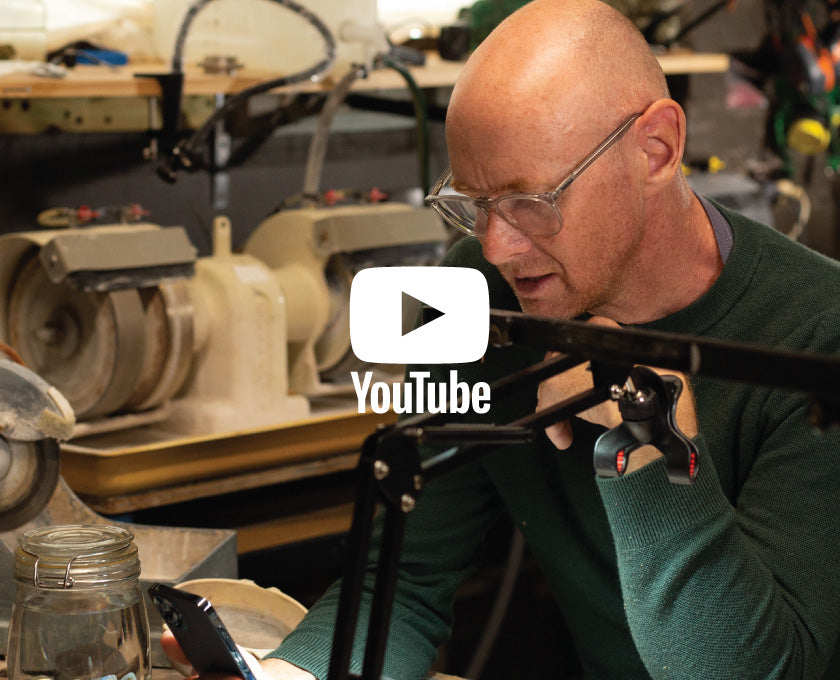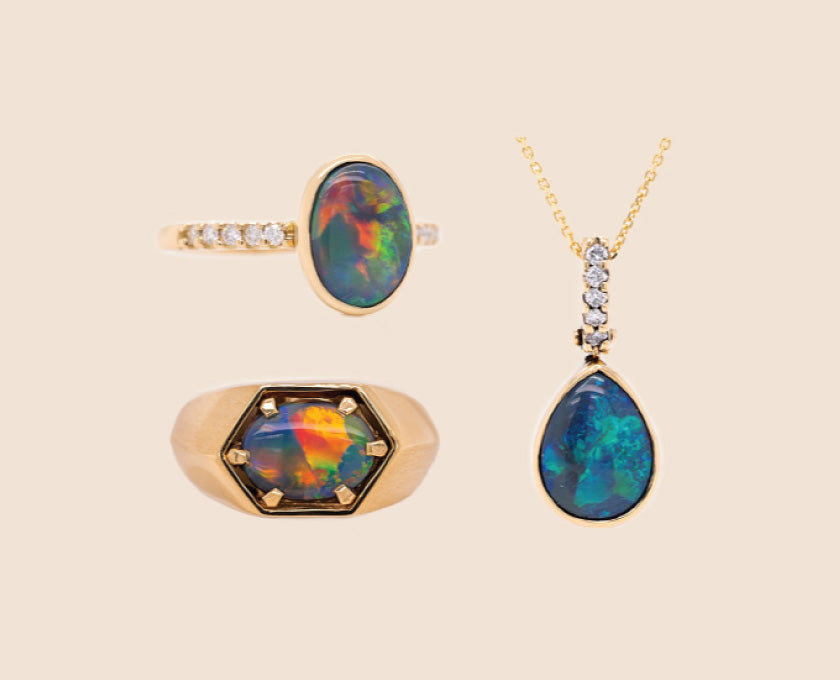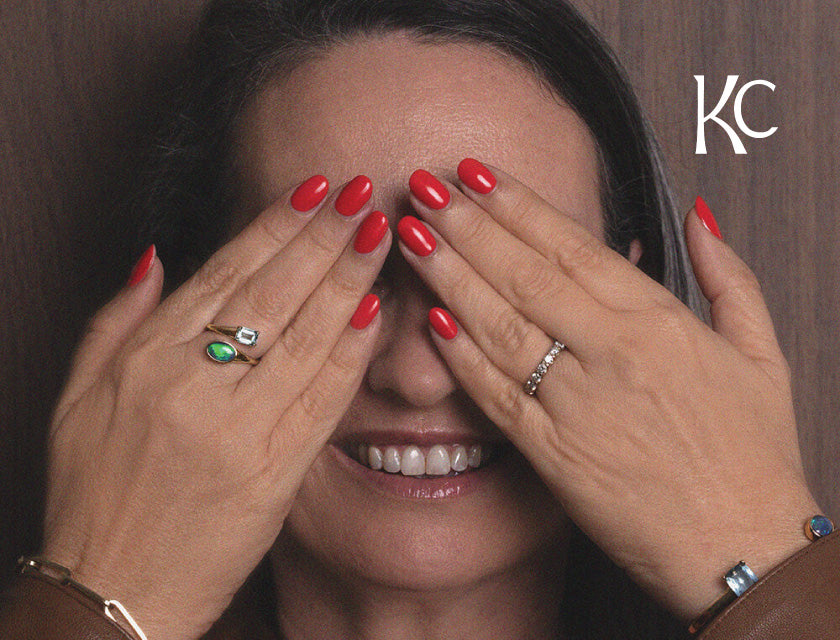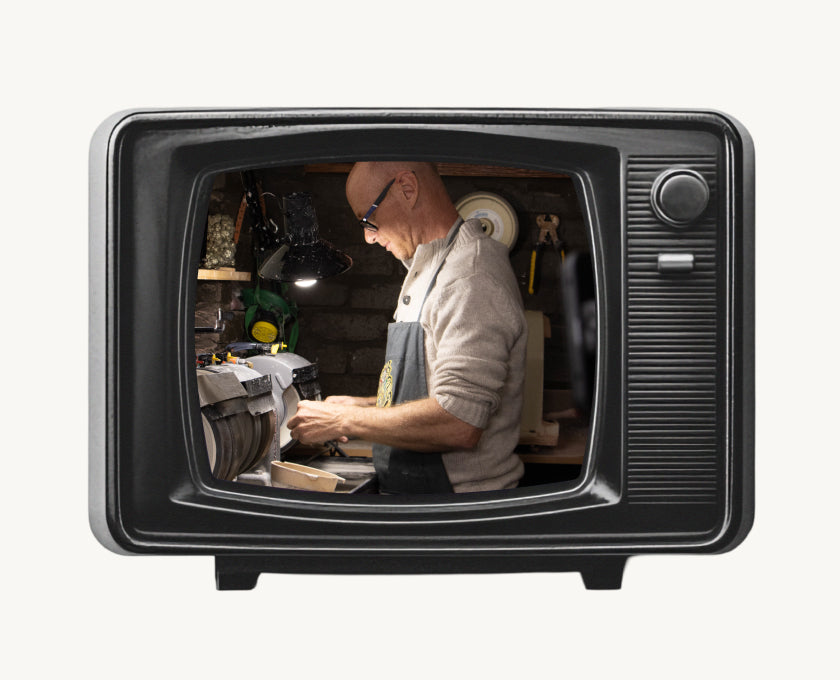Natural solid opal is rare—and with rarity comes imitation. From composites and synthetics to treated and lookalike gemstones, there’s a wide world of “opal” out there. Some enhancements are disclosed; others aren’t. And with Australian opal’s reputation for stability and quality, it’s not uncommon to see treated material from elsewhere passed off as the real thing. Knowing the difference matters—not just for price, but for peace of mind.
How can I tell if my opal is real?
Composites
Doublets are made by bonding a thin slice of precious opal to a black backing—commonly potch, ironstone, onyx, or plastic. This contrast boosts the opal’s color, offering the look of solid opal at a more accessible price.
Triplets are similar but take it a step further: a thin layer of natural opal is sandwiched between a black backing and a domed top made from glass, quartz, or plastic. They’re typically more affordable than doublets, thanks to the very fine opal slice used.
Inlay opals are thin pieces set directly into a cavity in a jewelry piece—like a ring or bracelet—then bonded in place. Inlay designs were particularly popular in past decades and still appear in vintage and custom designs.
How to Spot a Composite: If you’re unsure whether an opal is solid or a composite, here are a few simple checks for loose or jewelry set opal:
1. Side view - A perfectly flat, even line between the opal and backing material often indicates a composite—unlike the more irregular layers seen in natural solids.
2. Back of the stone - A smooth, flawless black backing with no inclusions or variation may suggest a doublet or triplet. Solid opals often show natural potch, sand, or slight imperfections.
3. Face up - Signs of layer separation or moisture intrusion (especially in triplets) can appear as fogginess or bubbles near the edges—these stones don’t like water.
4. Dome and surface - A high-gloss, domed surface resembling glass is a strong giveaway that you're looking at a triplet.
Note: Composite opals are still real opal—they're simply layered with other materials to enhance durability and appearance while preserving the genuine opal layer.
Imitations
Several natural minerals, like ammolite and labradorite, can mimic the look of opal, including the play of color effect. While these stones are beautiful in their own right, their visual similarities can be misleading.
Over the years, more obvious fakes have circulated—such as plastic cabochons with aluminium foil embedded to mimic opal’s fire. Today, the most common imitations are made from rubber or soft resin, swirled with color and then cut into opal-like shapes. These often lack the depth and structure of genuine opal and can usually be identified by their uniformity and plastic-like feel.
Synthetics & Lab Created
The first widely known lab-created opal was Gilson opal—a true synthetic with the same chemical composition and structure as natural opal. While no longer produced, it can still occasionally be found and is now relatively rare.
Today, the most common synthetic opals are Kyocera opals, marketed under various names like Bello Opal and Aurora Opal. These lab-grown materials come in a wide range of vibrant colors, mimicking the finest natural opals. While they’re a staple in mass-produced jewelry—especially on platforms like eBay and Etsy—they’re often sold without clear disclosure. Always check the fine print, and when in doubt, buy from a trusted source.
Treatments
Not all opals are as nature intended. Some undergo treatments to enhance or alter their appearance—especially to deepen color or improve durability. Here are the most common:
Andamooka Matrix is opal-in-host-rock material which is naturally light grey with muted color. To bring out vibrancy, it’s treated by soaking in a sugar solution and then heated in acid—turning the matrix dark and making the opal colors pop. This was especially popular in the 1970s–80s. Most matrix opal on the market today has been treated.
Opticon is a clear resin used to fill fractures or stabilize porous opal. It’s mostly seen in volcanic opals and some boulder opals with natural pits or voids. While not widespread, this treatment is usually disclosed when used—especially in the case of boulder.
Smoked or Dyed Opal have become more common, with the rise of Ethiopian hydrophane opal. These processes darken the stone to mimic the appearance of Australian black opal. Unfortunately, such treatments are rarely disclosed, making it vital to buy from knowledgeable, trustworthy sources.
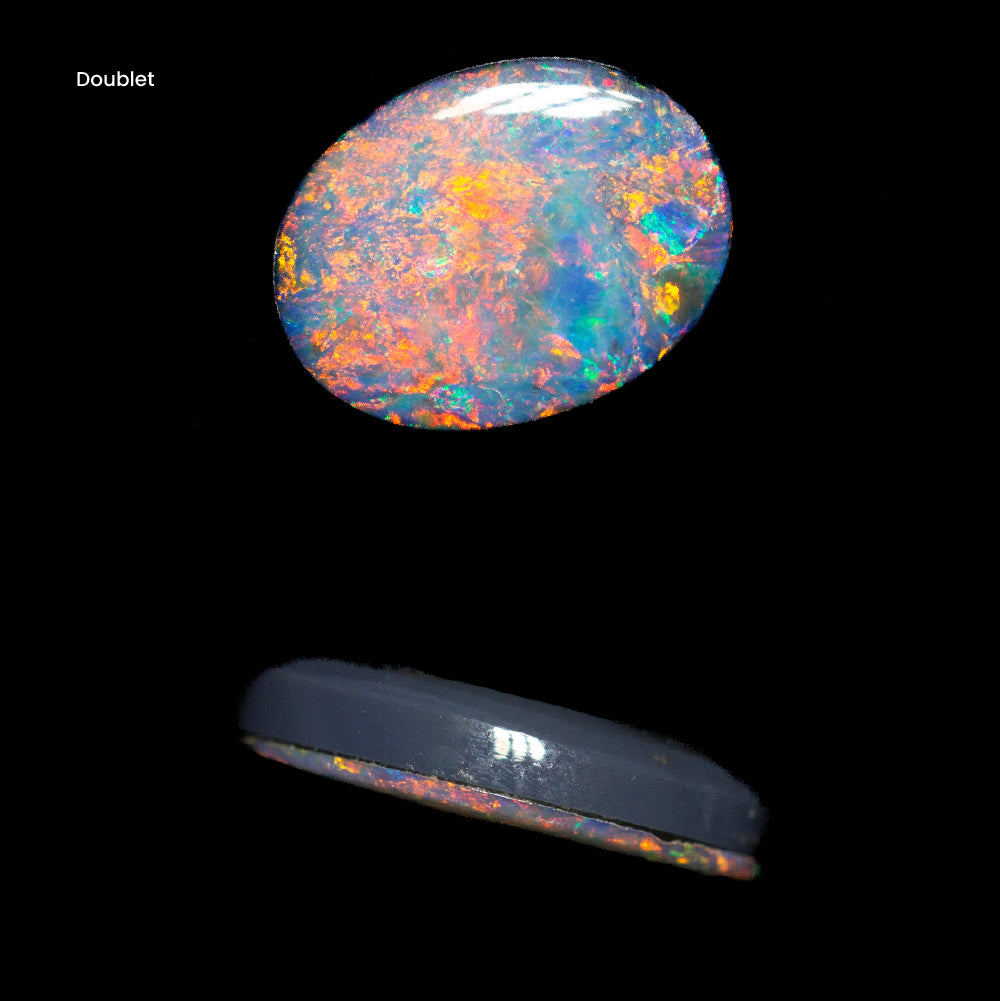
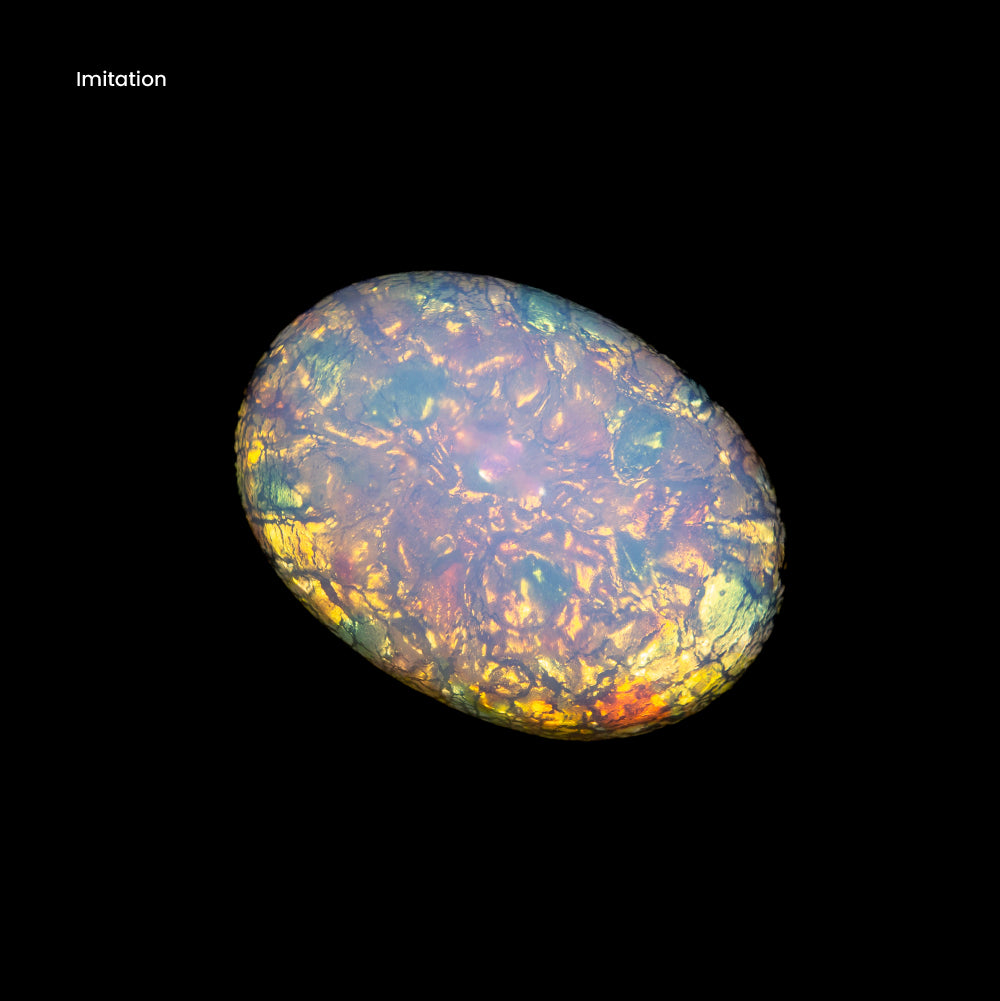
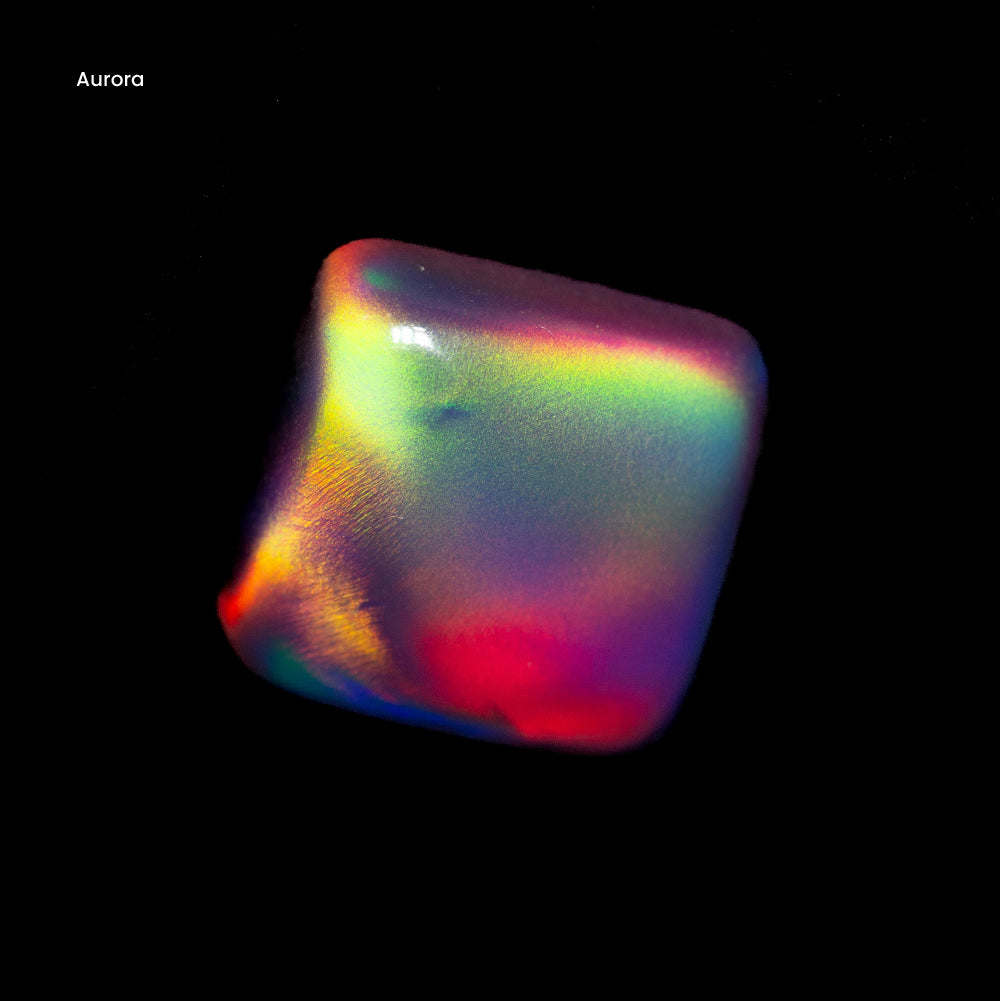
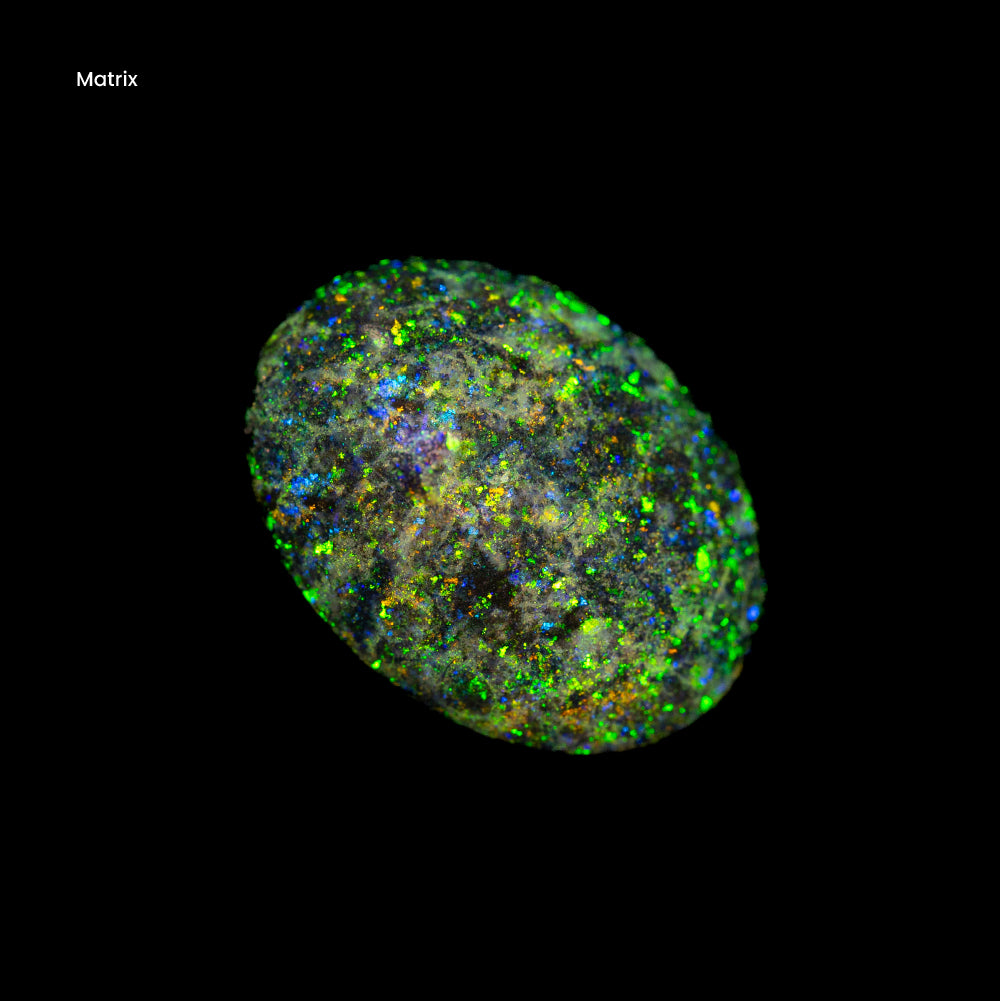
Buyer's Tip
If you’re shopping for opal online, look for clear terms like natural, solid, or Australian origin. Ask about treatments or lab-creation, and always request close-up photos or videos. Trusted sellers will be upfront—clarity is part of their credibility.
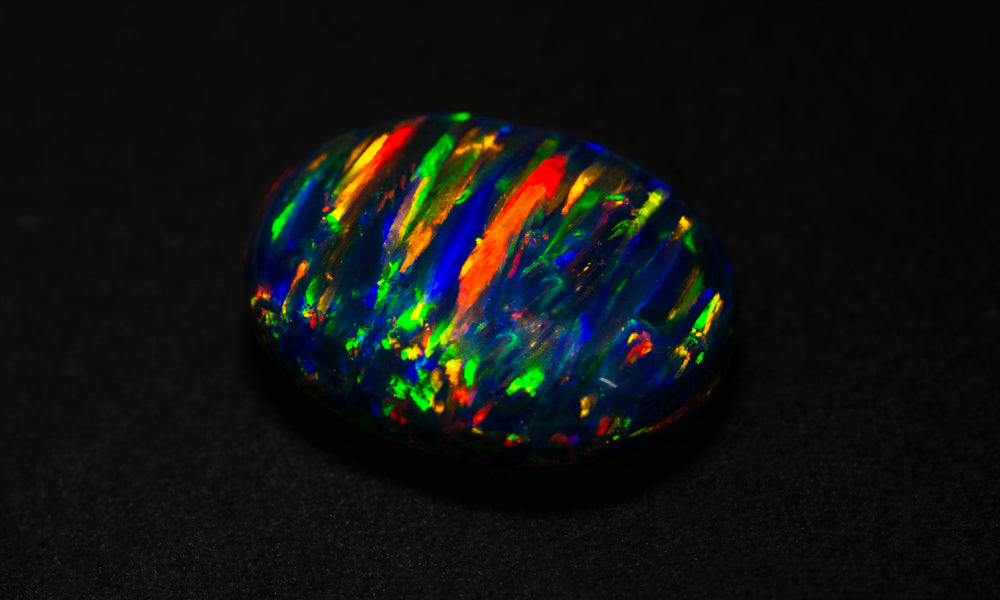
How do you spot a synthetic opal?
Justin explains the 3 characteristics that will stand out on a synthetic or fake opal as opposed to a natural one.
Frequently Asked Questions
Real opals have natural variations in pattern, body tone, and backing. If you're examining a loose stone or jewelry piece, look for signs like a perfectly flat line between layers (a sign of a doublet), a glassy surface (often seen in triplets), or a flawless black backing (another indicator of a composite). Solid opals usually have some natural imperfections—like potch, sand spots, or an uneven dome—and they won't fog up or show bubbles when exposed to water. Imitations and treated opals are also common. Synthetic opals like Kyocera or Bello Opal can look convincing but often feel plastic-like and too uniform. Some natural opals, like Andamooka Matrix or Ethiopian opal, may be treated with smoke, dye, or resin to enhance their appearance. These treatments aren’t always disclosed, which is why it’s best to buy from trusted, knowledgeable sellers who understand provenance and value transparency.
Lab-created opals, often called synthetic or man-made opals, are designed to mimic the beauty of natural opal—but there are some clear giveaways. Lab opals usually have a uniform, repeating pattern that lacks the random, organic variation seen in natural opals. Their colors can appear too perfect or "neon-like," and they often display a plastic-like texture or overly smooth surface. Natural opals, by contrast, show unique, irregular play of color and may include subtle imperfections—like sand spots, potch (common opal), or uneven contours. They also tend to have more depth and complexity in the way their color shifts with the light. Some of the most common synthetic types include Kyocera or Bello Opal, and while beautiful in their own right, they don’t have the rarity, value, or geological history of the real thing. When in doubt, ask for provenance—or buy from a trusted opal specialist.
